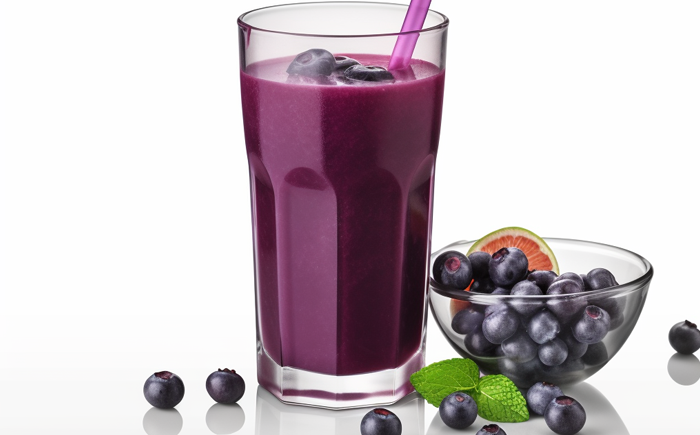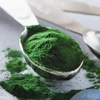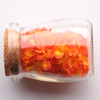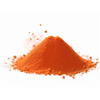
Information:
CAS number: 7084-24-4
Chemical formula: C21H20O11
Appearance: Dark red powder
Anthocyanins are a class of polyphenolic compounds with a variety of nutritional and biological activities. They usually appear purple, red or blue, and common anthocyanin-rich foods include purple sweet potatoes, blackberries, blueberries, red grape skins, black grape skins, black cherries and red cabbage. In addition, Anthocyanins are often used for extraction and pigment production.
Anthocyanins have strong antioxidant and anti-inflammatory effects, and may help prevent or reduce the risk of various chronic diseases. Anthocyanins are often used to study inflammation and oxidation, and to develop their important functions and health effects based on these studies.

Anthocyanins are receiving increasing attention, mainly because they are believed to help prevent the occurrence of many chronic diseases, such as cardiovascular disease, cancer, diabetes, and neurodegenerative diseases. These chronic diseases are usually related to oxidative damage from free radicals, inflammation and cell changes. Therefore, the reliable antioxidant and anti-inflammatory protective mechanisms of Anthocyanins are especially important for maintaining health.
Flavonoid compounds related to Anthocyanins are also receiving attention, especially rutin, quercetin, flavonoids and glycosylated flavonoids. These compounds also have antioxidant and anti-inflammatory effects, and are believed to help reduce the risk of many chronic diseases. Flavonoid compounds are often considered particularly beneficial for cardiovascular disease, because they can lower blood pressure, total cholesterol, triglyceride and LDL (low density lipoprotein) levels in patients, while also increasing HDL (high density lipoprotein) levels.
Anthocyanins not only have antioxidant and anti-inflammatory effects, but may also influence immunity, cardiovascular function, memory and anti-aging. For example, the role of Anthocyanins in preventing atherosclerosis and enhancing microcirculation can help prevent cardiovascular disease and other chronic diseases. In addition, studies show that Anthocyanins can protect the body from damage caused by free radicals and oxidation, and this protective effect helps slow down the aging process in humans.
Although Anthocyanins have been extensively studied and many people are supplementing with anthocyanin nutritional supplements, it needs to be recognized that there are still many unknown areas in this regard. For example, we still need to know more about the mechanisms of action of Anthocyanins and the optimal intake for health. But at the same time, many studies are still ongoing, which makes us believe that Anthocyanins have become one of the most promising areas.
In summary, Anthocyanins are a class of very valuable and important compounds that may have a significant impact on the prevention and treatment of many chronic diseases. This class of compounds has many effects, such as antioxidant, anti-inflammatory, and other aspects that may have a positive impact on health. Therefore, we should consume as many anthocyanin-rich foods as possible in our diet to ensure our health and prevent the occurrence of various chronic diseases.

Health benefits of Anthocyanins:
- Antioxidant. Anthocyanins are powerful antioxidants that can clear free radicals in the body and reduce oxidative damage[1].
- Anti-aging. Anthocyanins can slow down cell aging, delay skin aging and wrinkle formation, and have anti-aging effects[2].
- Lowering blood lipids. Anthocyanins can inhibit cholesterol synthesis, reduce the generation and absorption of triglycerides and cholesterol, and help reduce total cholesterol and triglyceride levels in the blood[3].
- Anti-inflammatory. Anthocyanins have anti-inflammatory effects and can relieve symptoms of inflammatory diseases such as rheumatoid arthritis[4].
- Protect eyesight. Anthocyanins can prevent retinal damage caused by blue light radiation, protect the macula and optic nerve, and prevent age-related macular degeneration and other eye diseases[5].
References:
[1]Rao AV,Rao LG.Carotenoids and human health.Pharmacol Res.2007;55(3):207-216.
[2]Junqueira VB,Barros SB,Chan SS,Rodrigues LAM,Giavarotti L,Abud RCB.Aging skin: a study of treesome protective factors - collagen, coenzyme Q10 and carnosine.Revista da Associacao Medica Brasileira.2012;58(2):246-251.
[3] Ku CS, Yang Y, Park Y, Lee J. Health benefits of blueberries and their Anthocyanins. Adv Nutr. 2016;7:324-339.
[4] Cho BO,Ryoo N,Park JS,Cho YH,Cho SK.Lutein suppresses inflammatory responses through Nrf2 activation and NF-kB inactivation in mast cells.Mol Nutr Food Res.2015;59(9):1696-1706.
[5] Liu X,Osawa T.Astaxanthin protects neuronal cells against oxidative damage and is a potent candidate for brain food.Forum Nutr.2009;61:129-135.
Application of Anthocyanins in foods:
- Beverage coloring. Anthocyanins are often used to color beverages including fruit juices and carbonated drinks. They can provide natural orange and red tones and good color protection. Studies show that Anthocyanins have very good color stability in beverages of different acidity and alkalinity, making them an ideal natural beverage colorant[1].
- Candy coloring. Anthocyanins are widely used to color candies, hard candies, butter, etc., giving bright yellow and orange tones[2].
- Yogurt and cheese coloring. Anthocyanins are used to color yogurt, cheese and other dairy products. They have good heat stability and coloring effect[3].
- Noodle coloring. Anthocyanins are used to add natural yellow tones to Italian noodles, udon noodles, etc. They have no odor and can improve the appearance of products[4].
- Other food coloring. Anthocyanins are also used to color sausages, hams, biscuits, cakes and other foods to enhance product color and increase consumer desire to buy[5].
References:
[1] Chen B, McClements DJ, Decker EA. Design of foods with bioactive lipids for improved health. Annu Rev Food Sci Technol. 2013;4:35-56.
[2] Hussein G,Sankawa U,Goto H,Matsumoto K,Watanabe H.Astaxanthin, a carotenoid with potential in human health and nutrition.J Nat Prod.2006;69(3):443-449.
[3] Delgado-Vargas F,Jiménez AR,Paredes-López O.Natural pigments: carotenoids, Anthocyanins, and betalains - characteristics, biosynthesis, processing, and stability.Crit Rev Food Sci Nutr.2000;40(3):173-289.
[4]Downham A,Collins P.Colouring our foods in the last and next millennium.Int J Food Sci Tech.2000;35(1):5-22.
[5] Ruiz PA,Braune AS,Hölzl G, et al. Lutein - an important ingredient for food fortification.J Med Food. 2019;22(3):245-253.
Touch
Our Office
F501 Gazelle Valley,Pioneering R&D Park, No.69 Jinye Road,Xi'an High Tech Zone,710077, China.Email Us
info@daynatural.comCall Us
+86 29 88390552HOT SALE







